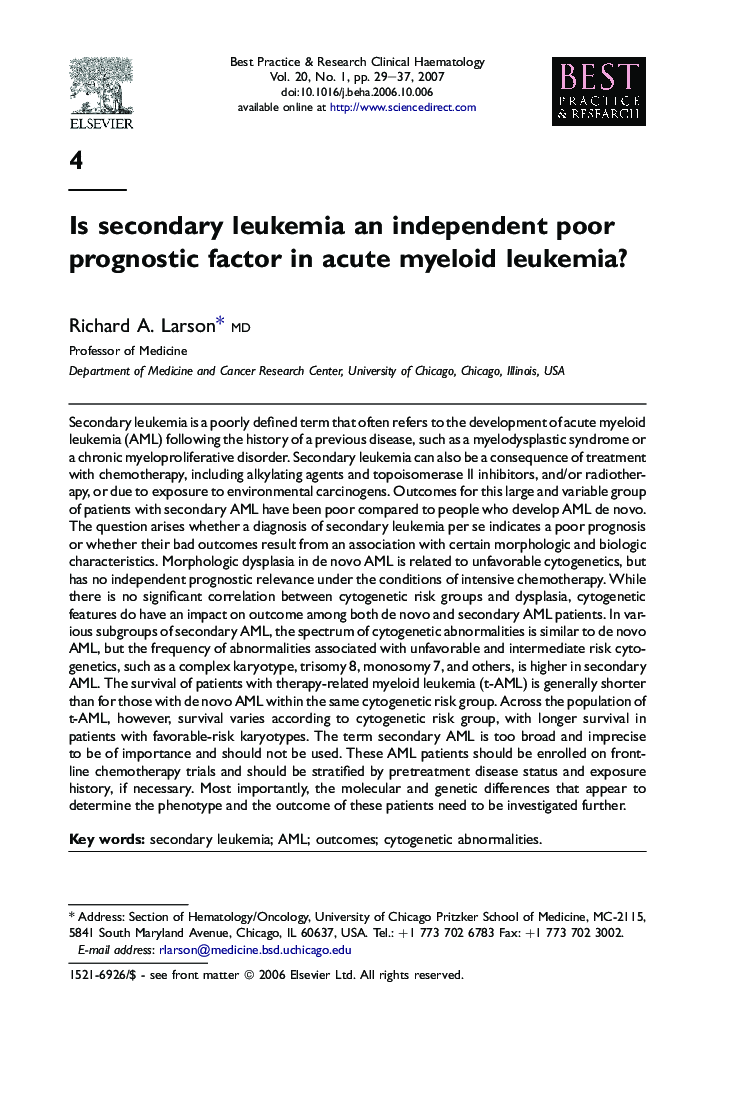| Article ID | Journal | Published Year | Pages | File Type |
|---|---|---|---|---|
| 2100543 | Best Practice & Research Clinical Haematology | 2007 | 9 Pages |
Secondary leukemia is a poorly defined term that often refers to the development of acute myeloid leukemia (AML) following the history of a previous disease, such as a myelodysplastic syndrome or a chronic myeloproliferative disorder. Secondary leukemia can also be a consequence of treatment with chemotherapy, including alkylating agents and topoisomerase II inhibitors, and/or radiotherapy, or due to exposure to environmental carcinogens. Outcomes for this large and variable group of patients with secondary AML have been poor compared to people who develop AML de novo. The question arises whether a diagnosis of secondary leukemia per se indicates a poor prognosis or whether their bad outcomes result from an association with certain morphologic and biologic characteristics. Morphologic dysplasia in de novo AML is related to unfavorable cytogenetics, but has no independent prognostic relevance under the conditions of intensive chemotherapy. While there is no significant correlation between cytogenetic risk groups and dysplasia, cytogenetic features do have an impact on outcome among both de novo and secondary AML patients. In various subgroups of secondary AML, the spectrum of cytogenetic abnormalities is similar to de novo AML, but the frequency of abnormalities associated with unfavorable and intermediate risk cytogenetics, such as a complex karyotype, trisomy 8, monosomy 7, and others, is higher in secondary AML. The survival of patients with therapy-related myeloid leukemia (t-AML) is generally shorter than for those with de novo AML within the same cytogenetic risk group. Across the population of t-AML, however, survival varies according to cytogenetic risk group, with longer survival in patients with favorable-risk karyotypes. The term secondary AML is too broad and imprecise to be of importance and should not be used. These AML patients should be enrolled on front-line chemotherapy trials and should be stratified by pretreatment disease status and exposure history, if necessary. Most importantly, the molecular and genetic differences that appear to determine the phenotype and the outcome of these patients need to be investigated further.
